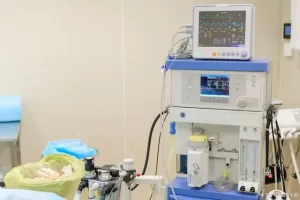In the operating room, patients are familiar with anesthesia machines and respiratory ventilators as essential medical equipment frequently used during medical procedures. However, questions often arise about the disinfection process for these devices and how frequently they should be disinfected.In order to solve these problems, to ensure effective disinfection and maintain patient safety, it is a relatively important part of an anesthesia department.

Factors Guiding Disinfection Frequency
The recommended disinfection frequency for anesthesia machines and respiratory ventilators is determined based on the frequency of patient usage and the nature of the patient's underlying disease. Let's explore the disinfection frequency guidelines based on the nature of the patient's disease:
1. Surgical Patients with Non-Communicable Diseases
For patients with non-communicable diseases, the degree of microbial contamination of medical equipment shows no significant difference within the first 7 days of use. However, after 7 days of usage, there is a noticeable increase in contamination. As a result, we advise thorough disinfection of the equipment after 7 days of continuous use.
2. Surgical Patients with Airborne Communicable Diseases
In the case of patients with airborne communicable diseases, such as open/active pulmonary tuberculosis, measles, rubella, chickenpox, pneumonic plague, hemorrhagic fever with renal syndrome, H7N9 avian influenza, and COVID-19, we recommend using the Anesthesia Breathing Circuit Disinfection Machine to disinfect the equipment after each use. This ensures effective containment of potential disease transmission.
3. Surgical Patients with Non-Airborne Communicable Diseases
For patients with non-airborne communicable diseases, including AIDS, syphilis, hepatitis, and multi-drug-resistant bacterial infections, we also suggest using the Anesthesia Breathing Circuit Disinfection Machine for comprehensive equipment disinfection after each use.

4. Surgical Patients with Adenovirus Infections
Patients with adenovirus infections require a more rigorous disinfection process due to the virus's higher resistance to chemical disinfectants and thermal factors compared to bacterial spores. For such cases, we recommend a two-step approach: first, the internal components of the medical equipment should be disassembled and sent to the hospital's disinfection supply room for conventional sterilization (using ethylene oxide or high-pressure steam). Afterward, the components should be reassembled, followed by thorough disinfection using the Anesthesia Breathing Circuit Disinfection Machine for complete eradication of the virus.
Conclusion
The frequency of disinfection for anesthesia machines and respiratory ventilators is essential to prevent the spread of infectious diseases and maintain a safe environment in the operating room. Adhering to the recommended disinfection guidelines based on the patient's disease characteristics is crucial for ensuring patient well-being and reducing the risk of hospital-acquired infections.